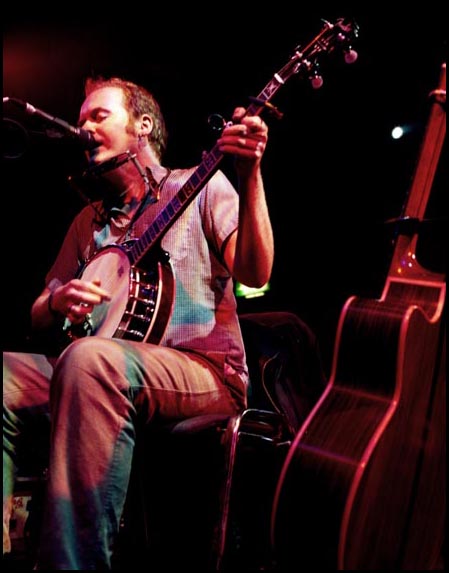
James Yorkston – St. Giles Church, London
The venue was a grand church just near Holborn station where you can sitting in the pews and watch some nice music performed by nice people, with acoustic guitars, a hushed silence and the possibility of musical saws. A mistimed intake of breath may catch the attention of a nearby attendee with a rather disdainful look (I’m not too sure if you’ve been to church in a while, but it is a similar stare to one who doesn’t put quite enough money in the collection plate). When the music starts, alongside looking at the deft plucking of the guitar you do get occasional flashes of weirdness that you had come you had come to a church voluntarily on a Wednesday night.
No drinks allowed in this auditorium of God, playing host to secular music to get a new spire or stained glass window. You are allowed to pop across the road to a pub which does its best to offer the exact opposite of the church. A head-banging, scull and serpent fest with a good deal of metal facial embellishments. It is the antidote to the serene folky, indie Women’s Institute feel inside the church. You have to swallow a beer to get back for the next act, which I presume have left a few sorry souls guilty and hiccoughing in the galleries.
Forget at your peril that all James Yorkston gigs begin promptly and are events that resemble a hippy gathering of old. Last year’s gig at the Tabernacle, Notting Hill, was a choca-block evening where you had just enough time to go to the toilet before the arrival of the next array of British folk with all of its wistful, sorrowful and comic undertones. This gig was not dissimilar, and shamefully I missed most of the set of the delightful Lisa Knapp, who sang traditional folk and strummed excellently, setting the scene for an evening of delightful music with in the church with the echoey-acoustics of a choirmaster’s dream.
Phil Selway, of the majestic Radiohead, was on show to try and shout from the rooftops that it isn’t only Tom Yorke and Johnny Greenwood who have creative flair. Unfortunately, although the music was ambient enough, with that all important bowed saw that haunted the church for minutes after it was played, it lacked something. The songs were played well, but Selway sang and had the charisma of a lacklustre modern church singer, trying to play some inspiring music (a Catholic education has hopefully given me the ability to do a few Christian based puns if nothing else) that never really got going. Lyrically it was not up to scratch, and the songs melded into one, which which freed you up to think about the logistics of the next pint at the Satan’s Head across the road. One or two of the songs were worthy, but it felt as if his name preceded him far too much.
Next came the headline James Yorkston, a singer not too dissimilar to the stylings of early Arab Strap but definitely with a more stripped down sound. Alongside touting his book full of poetic funny anecdotes, which broke up the music nicely and showed Yorkston to be a singer who hadn’t had the unfortunate charisma transplant of the performance beforehand, he played a collection of past songs. The assembled masses to get a good view even parked themselves down in the aisle of the church – the gallery up top is nice to sit in if you have a front row seat, everywhere else and you half wonder whether you’ll get a discount on obstructed view seats.
Last time I saw him he was with a band that gave the songs a more relaxed and soothing style to them. One of the greatest achievements of good song writing is that they can be performed differently with the same effect, something that was certainly pulled off. Yorkston played the songs solo and fast-paced, which presented the audience with a distorted version of the way they’ve heard them on his studio albums. It felt almost punky, and beauty met with real bitterness particularly in his song ‘Temptation’, though ‘Tortoise Regrets Hare’ was another well worked tune. Occasionally bringing on a few of his friends to sing-a-long, he retained a highly charged evening, though not thrashy, with the guitar played expertly. It is folk music, but not quite as conventional as you’d think.
________________________________________
